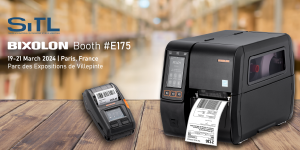
The European restaurant industry is on the brink of significant growth, with projections indicating a 9.60% increase forecasted between 2023–2029. However, the sector faces numerous challenges, including a 72% surge in hospitality vacancies post-Brexit in the UK and a spike in European food prices since 2022. In this landscape, delivering an outstanding customer experience, both in-house and through delivery apps, has become a critical concern for businesses.
In this blog, BIXOLON explores five strategic ways the hospitality industry can leverage intelligent printing solutions to address these operational challenges and deliver a tangible return on investment.
Efficient Food Delivery
The current cost-of-living crisis has reshaped consumers’ attitudes to eating out, prompting restaurants to embrace food aggregator services to maintain profitability. Indeed, the food delivery industry is expected to grow to $320 billion by 2029, underlining the level of opportunity.
To streamline this process, restaurants can adopt cloud printing to dedicated printers ensuring quick and error-free order processing, and mitigating against any problems associated with taking orders manually. Linerless label printing products such as the SRP-S200 or SRP-S300 linerless POS printers with their minimal wastage and customisable label print lengths, offer an added benefit to print only the information that is necessary. By using two different adhesives – permanent or semi-permanent – restaurants can enhance security and accuracy with linerless labels to use anti-tamper seals to ensure timely deliveries without compromising quality.
Maximising Staff Availability
With customers increasingly viewing ‘eating in’ as an occasion, the hospitality industry is focusing on improving the quality of experience. Given endemic staff shortages, technology is playing a vital role in supporting staff efficiency. Mobile devices for order-taking, coupled with mobile printers such as the SRP-R200plusIII, enable staff to manage the entire customer experience at the table. This eliminates the need to return to the Point of Sale (POS) for bill printing or card payment collection, enabling staff to focus more on customer interactions (for example, discussing allergens or explaining items on the menu). Touch screen printers such as the XQ-840 facilitate seamless coordination, allowing both new and experienced staff to contribute effectively during peak hours, and during busy seasonal periods.
High Quality Self-Service Experiences
To combat staff shortages, a growing number of restaurants are also exploring customer self-serve options, including QR code-based menus and kiosks for fast food orders. App-based ordering, particularly beneficial in tourist-heavy areas where language barriers can become an issue, reduces errors and minimises staff dependency by offering multiple language choices, allowing customers to order in their own language. Kiosk systems with integrated printers not only decrease queues but also boost sales by 10-20%, creating a more relaxed environment for customers to explore the menu and place larger orders. With the inbuilt printer providing the order and receipt, the entire process is both less staff dependent and more profitable and suitable for some food and beverage situations.
Reducing Food Waste
With the cost of raw ingredients rising at the fastest rate in decades and supply chain shortages continuing to create challenges for restaurant kitchens, staff are under enormous pressure to minimise food wastage. Staff shortages can, again, cause problems. A lack of experience combined with staff working different shifts can make it hard to keep track of product usage, leading to unnecessary wastage of fresh items. Using integrated tablet printers in tandem with a food labelling solution enables kitchen staff to easily keep track of items such as freshly created salads or newly opened jars. This not only reduces waste but also enhances stock rotation and supports allergy reporting, crucial for compliance with regulations such as Natasha’s Law and similar EU laws where the use of the SLP-DX220 desktop label printer is ideal for ingredient labelling of fresh goods.
Eco-Visibility
In an era where customers are increasingly prioritising information about allergens and ingredients, the use of eco-friendly blue printer paper also becomes a valuable tool. Displaying specific messaging on customer receipts, especially on environmentally friendly paper such as Koehler’s Blue4est thermal paper working with the SRP-380 and SRP-350plusV, serves as a powerful marketing tool and showcases the restaurant’s commitment to environmental concerns.
Conclusion
Restaurants navigating the current crises in the hospitality industry through innovation are poised to thrive in the future. Simple changes, such as eliminating kitchen errors, leveraging mobile printing, and embracing eco-friendly options, can yield significant benefits both reputationally and for the bottom line. As the industry anticipates growth, those adapting to the evolving landscape by adopting this technology will be well-positioned to capitalise on emerging opportunities.
For more information on BIXOLON hospitality printing solutions visit the BIXOLON website or contact your local BIXOLON sales representative.



